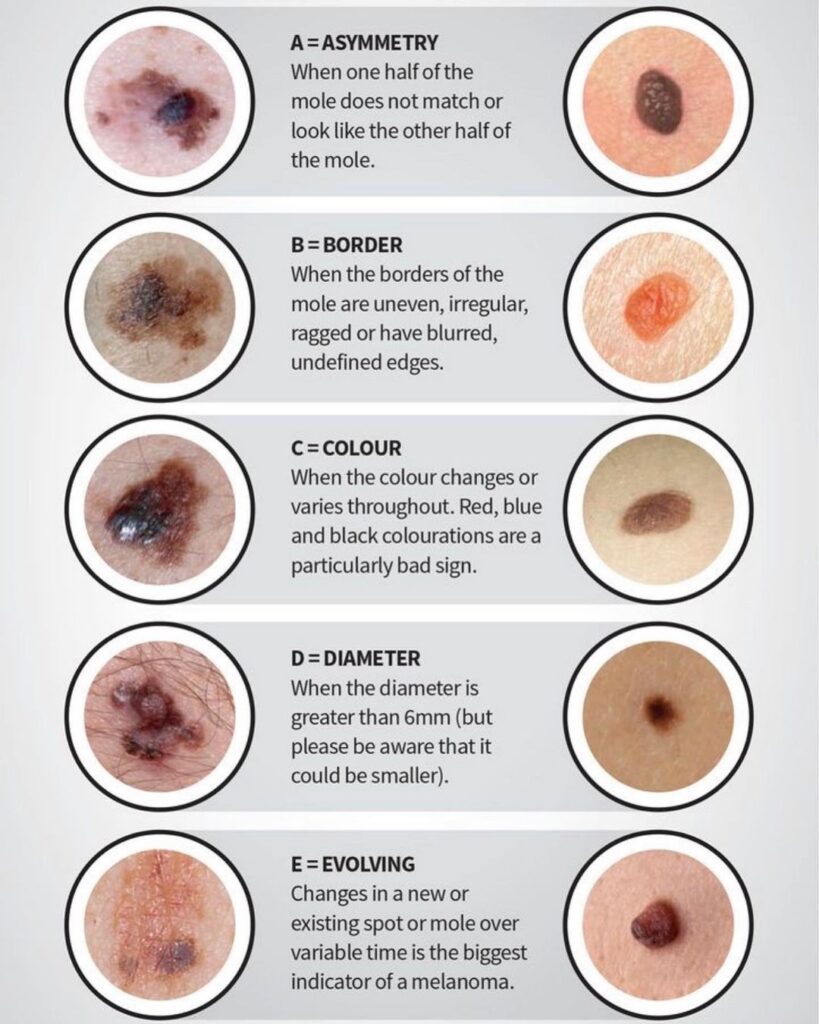The ABCDE rule is a mnemonic used to help detect melanoma, one of the most serious types of skin cancer. This rule is particularly helpful for examining moles and other skin lesions to determine if they might be suspicious and require further medical evaluation. Here’s what each letter stands for:
- A – Asymmetry:
- Normal moles or benign lesions are usually symmetrical.
- If you draw a line through the middle of the lesion, the two halves will typically match, meaning they are symmetrical.
- If the mole is asymmetrical, where one half does not match the other, it’s a warning sign for melanoma.
- B – Border:
- A benign mole has smooth, even borders, whereas melanomas often have uneven borders with scalloped or notched edges.
- C – Color:
- The colour of a normal mole is usually a single shade of brown.
- A mole that has multiple colours (such as shades of brown, tan, black, blue, red, or white) or an uneven distribution of colour can be a warning sign of melanoma.
- D – Diameter:
- Malignant moles are usually larger in diameter than benign moles.
- The diameter of a mole concerning melanoma is typically larger than 6 millimetres (about the size of a pencil eraser), although they can sometimes be smaller when first detected.
- E – Evolving:
- Any change in size, shape, color, elevation, or another trait, or any new symptom such as bleeding, itching, or crusting, points to danger.
- A mole that looks different from the rest or is changing in any way should be regularly checked.
The ABCDE rule is a simple and effective way to monitor changes in moles and skin lesions, but it’s important to remember that some melanomas may not fit these criteria.

